GWA Newsletter: December
Hilton Als on the importance of sharing language; Caroline Vout on Classical bodies; Elif Shafak on storytelling; and everything you need to see, read, and do this month!
Dear Great Women Art Lovers,
I hope you are all well. Fresh from a fabulous evening at Hatchards, quizzing and signing books for art lovers – along with fellow podcasters Russell Tovey and Robert Diament – I bring you the December newsletter!
Here’s a rundown of things I’ve been up to:
I’ve had the privilege of talking to some of the world’s greatest writers on this series of The Great Women Artist Podcast. With Elif Shafak, I discussed artists Frida Kahlo and Artemisia Gentileschi, and more generally, storytelling. A preview:
“Where we are right now: I think we're living in a world which is bombarded by information. We have way too much information, more than we can process, let alone misinformation. But we have much, much less knowledge, and even less wisdom. So how can we change that ratio? How can we deal with less information in our daily lives, but with more knowledge, and hopefully, eventually, with more wisdom? I think for knowledge, you need to slow down, knowledge cannot be rushed.” Listen here.
Hilton Als spoke beautifully on Diane Arbus and Alice Neel, and the importance of sharing language:
“I feel that it's our duty that if we have language, we can share that language. And by sharing language, we're giving people access to ideas … If it weren't up to us, for us to disseminate information. To do that requires language that doesn't – as Toni Morrison used to say, “language that doesn't sweat”. One of the great efforts and beauties of being able to write, and care about writing, is: how do we make this information available to all kinds of people, not just people who are involved in the art world?”
Als on how Arbus and Neel capture NYC:
"What I'm interested in is how they have each exposed me to place that I recognise ... but they make New York a place of myths. And that it's the myths that live there are self invented. And the sitter's are self invented, the artists itself invented. And so what are we left with, in terms of this kind of shredded reality is visual storytelling that is really concentrated on myth making." Listen here.
World-renowned classicist and Professor at Cambridge University, Caroline Vout discussed figures from Venus to Hermaphroditus, and the variety of classical bodies in sculpture:
“When you think about Greek and Roman bodies, you think about sculpture. Sculpture is inevitably in our space, in our face. It demands that you think about how you measure up to it. I find Greek and Roman bodies in that sculptural form fascinating, because they force me to think about similarities that I might share with the ancients, but also ways in which I’m really different. They force me to think about how those sculptures do and don’t look like they did back in antiquity, and they force me to think about whether they ever looked, even in antiquity, anything like the Greeks.”
…as a result:
“In thinking about those questions, that makes me more aware of my own physicality, my own place in the world. So I think it’s the sculpture that really got me interested in the body in the first place.” Listen here.
Last week for The Guardian, I wrote my column on the National Museum of Women in the Arts in D.C., and the vital need for these institutions. Read it here.
“Although this is a museum filled with work by women, it is not exclusively for women. People of all ages, genders and backgrounds can – and should – visit. After all, the statistics are still appalling: just 1% of London’s National Gallery collection is made up of art by women – doesn’t that essentially make it the National Gallery of Men in the Arts? That’s why museums like NMWA are so vital. Gallery walls should reflect everyone. Then everyone will feel welcome.”
I went to The Fitzwilliam Museum to present a film about their incredible exhibition Real Families: Stories of Change featuring artists such as Alice Neel, Paula Rego, Catherine Opie, Chantal Joffe, and more. On view until 7 Jan. Watch now.
With Christmas around the corner, I put together a Great Women Artists Gift Guide!
OK! Here are your top cultural picks. Love, Katy. Xoxo
10 Shows to See
Nicole Eisenman: What Happened at Whitechapel Gallery (until 14 Jan)
Helen Johnson: Opening at Pilar Corrias, (until 6 Jan 2024)
The Mother and The Weaver: Art from the Ursula Hauser Collection at the Foundling Museum (until 18 Feb)
Jenny Saville: Ekkyklema, at Gagosian (until 10 Feb)
Rhea Dillon: An Alterable Terrain at Tate Britain (until 1 Jan)
Liorah Tchiprout: Two Eyes Wide Open at the Edge of Dawn at Marlborough Gallery (until 27 Jan)
Black Atlantic: Power, People, Resistance at the Fitzwilliam Museum (until 7 Jan)
Marsi van de Heuvel: Skoonveld at Goodman Gallery (until 22 Dec)
Francesca DiMattio: Wedgewood at Pippy Houldsworth (until 23 Dec)
Not an art exhibition, but – omg – The Witches at The National Theatre is so good!
10 Things to Listen to
The Joni Mitchell Story on BBC Sounds
Sonia Boyce on Adrian Piper or Zoe Whitley on Kathleen Collins on Bow Down: Women in Art
Peter Frankopan and Afua Hirsch on Legacy
Greta Gerwig by Jesse Armstrong on BFI Film Festival 2023 Screen Talk
Cotton Capital on the Guardian
Santigold on Broken Record
Women, Art and Activism on Arts & Ideas
Jamaica Kincaid on Why Women Grow
Ayanna Lloyd Banwo The Granta Podcast
Love in the Borderlands on Being Roman with Mary Beard
12 Things to Read
Look out for a newsletter next week charting the best books for 2024!
Claire Keegan: Small Things Like These
Ellena Savage: Blueberries: Essays Concerning Understanding
Gillian Rose: Love’s Work
Amy Tobin: Women Artists Together: Art in the Age of Women’s Liberation
Catherine Lacey: Biography of X
Zadie Smith, ‘The Fall of My Teenage Self’ in The New Yorker
Hilton Als: My Pinup
Dinah Birch on Vernon Lee’s ‘The Virgin of Seven Daggers’ in the LRB
Helen Molesworth: Thirty Years of Writing About Art
Kae Tempest: Divisible by Itself and One
Max Berlinger ‘What women designers have brought to fashion’ in the FT
Claire Ratinon: Unearthed: On Race and Roots, and How Soil Taught Me to Belong
5 Artists You Should Know
Working across textiles, ceramics, print and painting, Kattah is an interdisciplinary artist who draws on her personal archive of photos and materials from London and Ghana to produce jubilant and tender artworks.
Anne Truitt (1921-2004)
The American sculptor is known for making large scale works by hand. Her experience in clinical psychology informs her interest in form and memory, unlike the intensions of minimalist sculptors who were her contemporaries. She said: “What is important to me is not geometrical shape per se, or colour per se, but to make a relationship between shape and colour which feels to me like my experience. To make what feels to me like reality.”
Qualeasha Wood (b.1996)
Woods weaves her tapestries from a lexicon of screenshots, selfies and sidebars. She visualises the almost universal and overwhelming experience of a life lived online by using her own body as a point of reference, and departure into wider conversations of marginalisation and sexual exploitation. I love how she brings an age-old textile practice to her ultra contemporary subject matter.
Mierle Laderman Ukeles (b.1939)
A self described ‘maintenance artists’, Laderman Ukeles’ performance work draws attention to the low social value of maintenance work (childrearing, cooking, cleaning), in and beyond the home. A great article.
Sikelela Owen (b.1984)
Owen paints the gentle joy of everyday life. Her soft depictions of family and relationships recall 19th century leisure culture, while her concentration on the Black figure alludes to entangled histories and contemporary realities.
That’s it from me! Happy GWA’ing. Thank you for reading this Substack. If you think someone else might enjoy this too, please spread the word and share this article. If you have any feedback, please comment below.









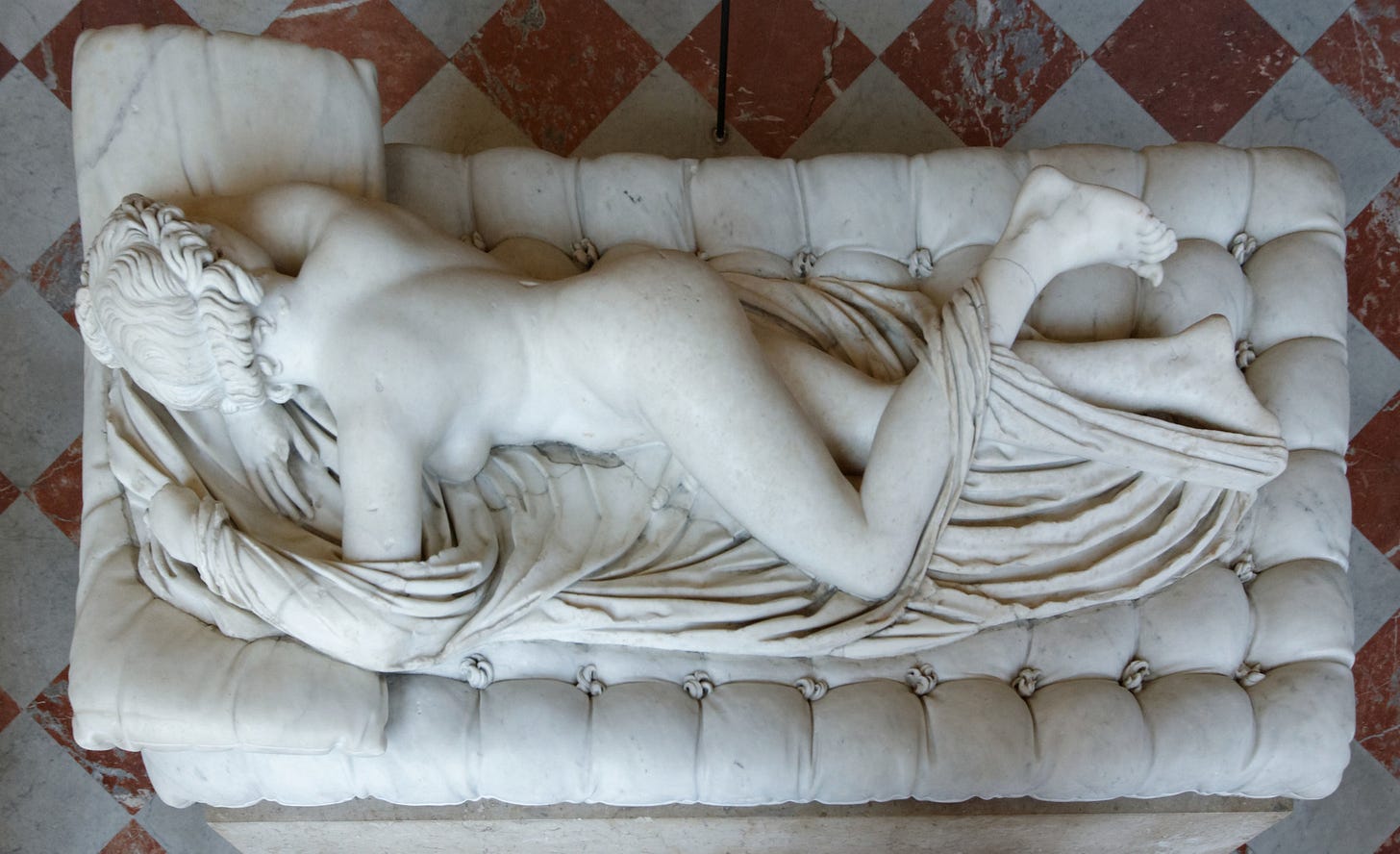


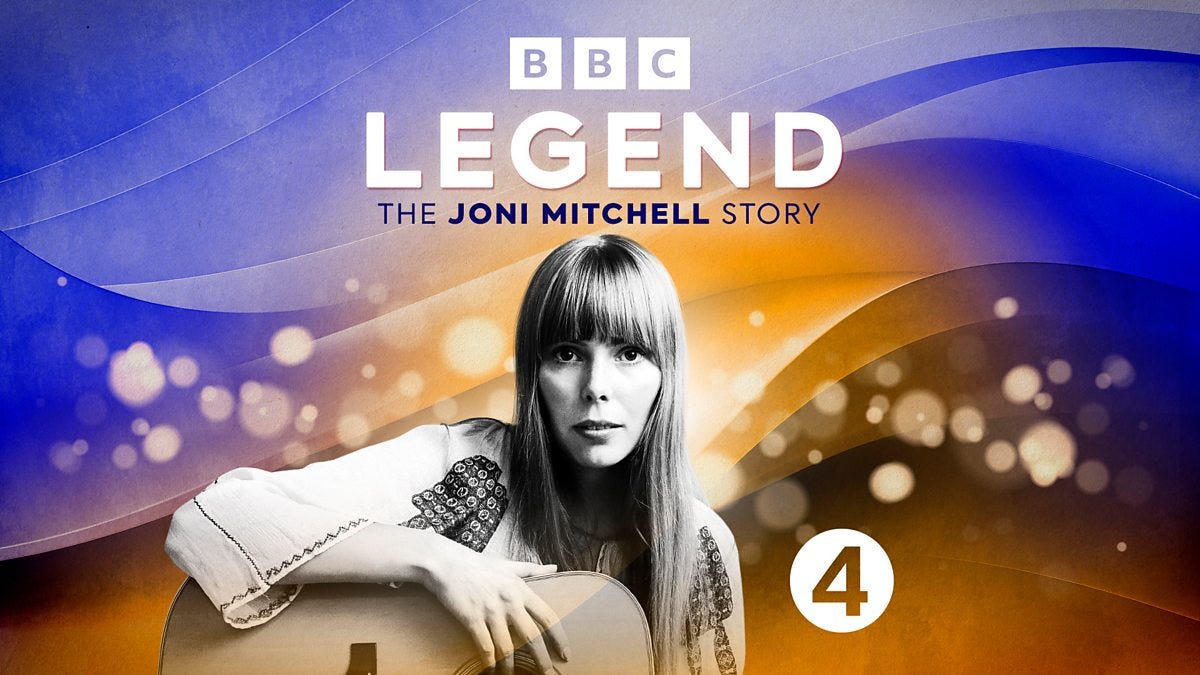


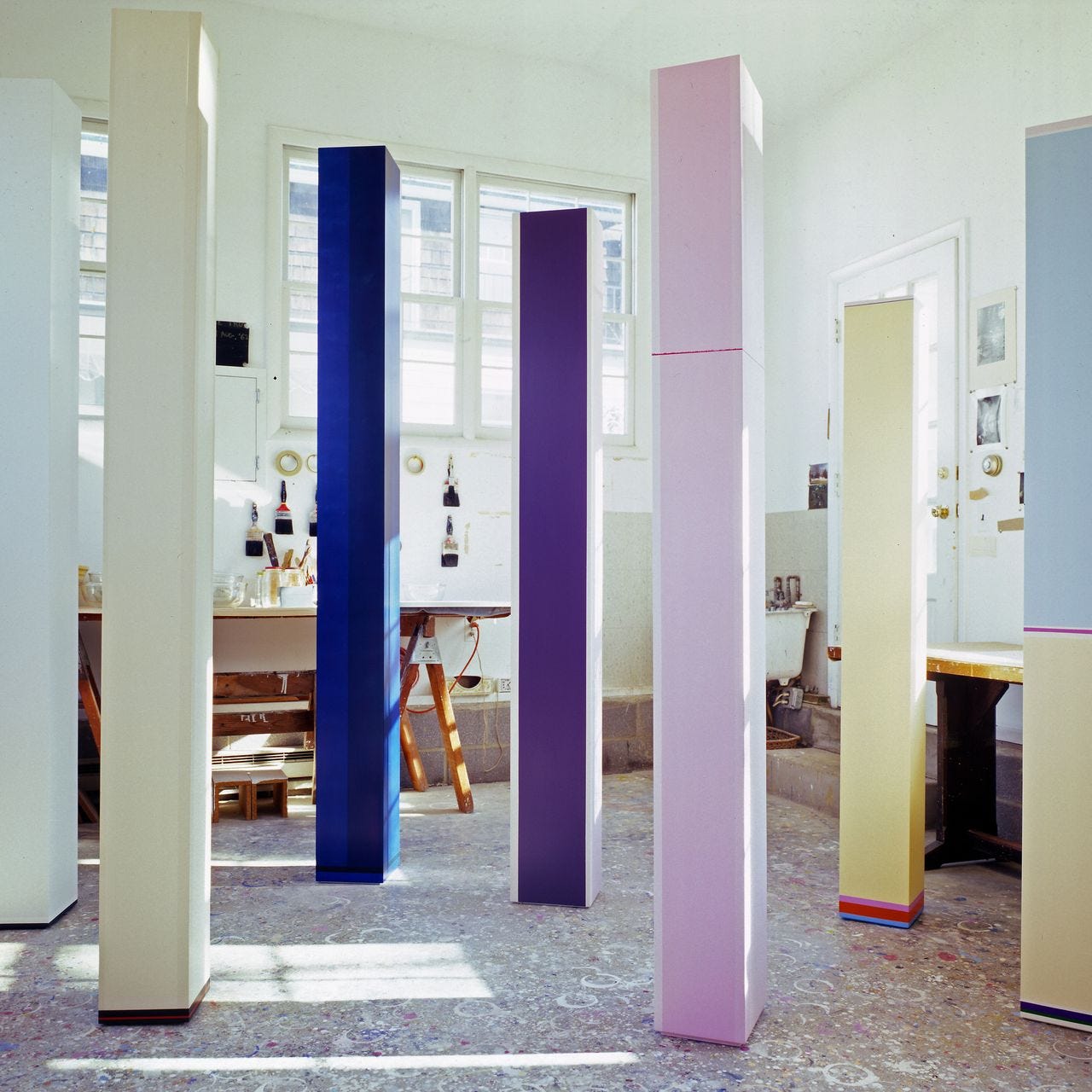
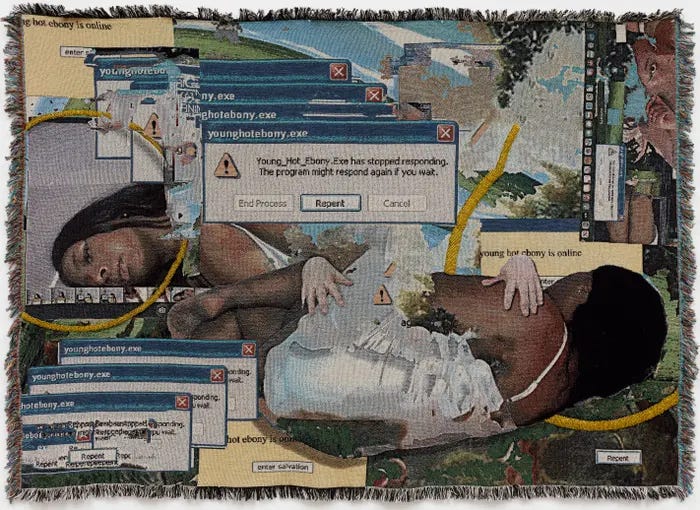
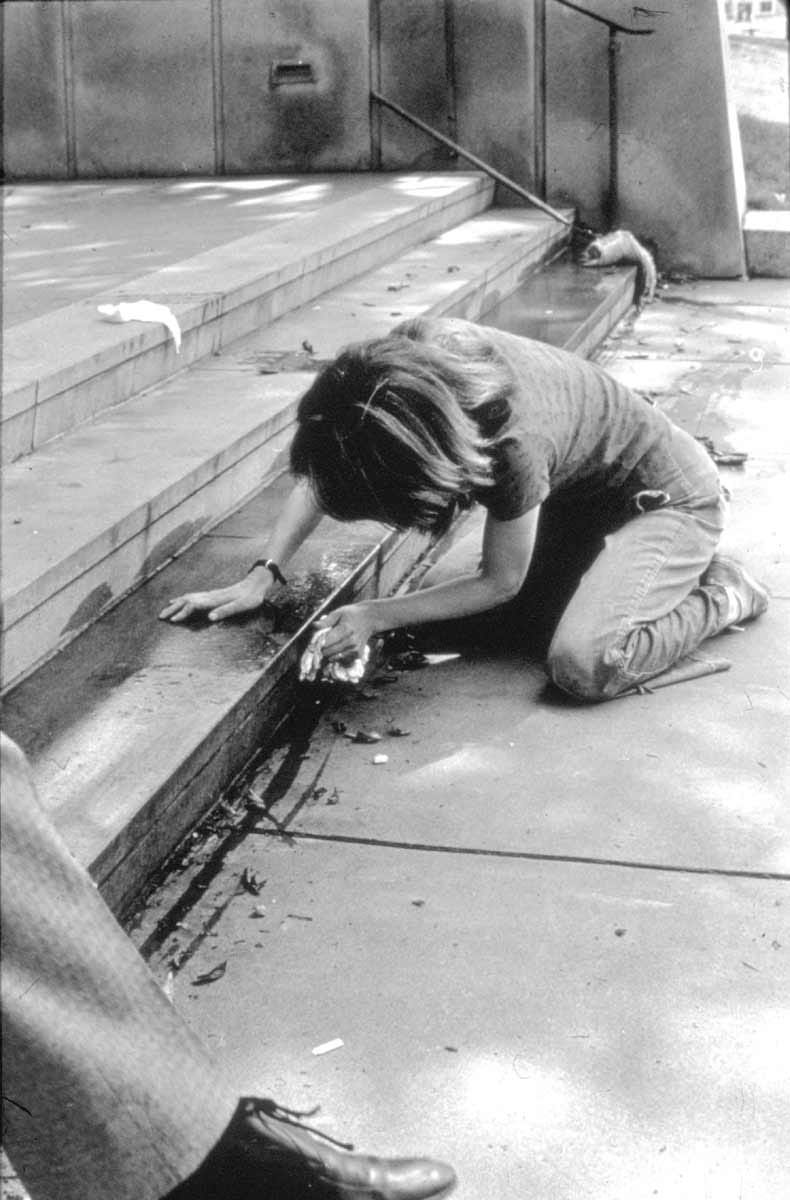
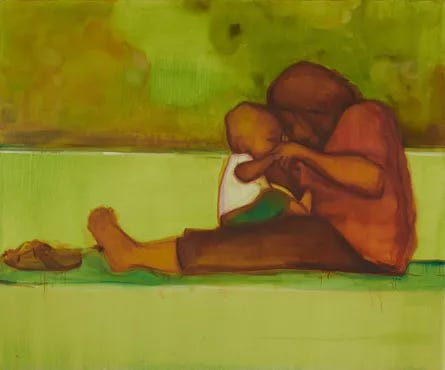
Wow! Wow! A lot of information to enjoy. I'm glad I decided to read parts of the article as I discovered the video of Katy Hessel, walking through and talking about the "Real Families": I love it. I'm in America and reading your Substack makes me want to travel to art museums all over the world. Thank you for your generous writings. 😊
I love the conversation with Elif Shafak!